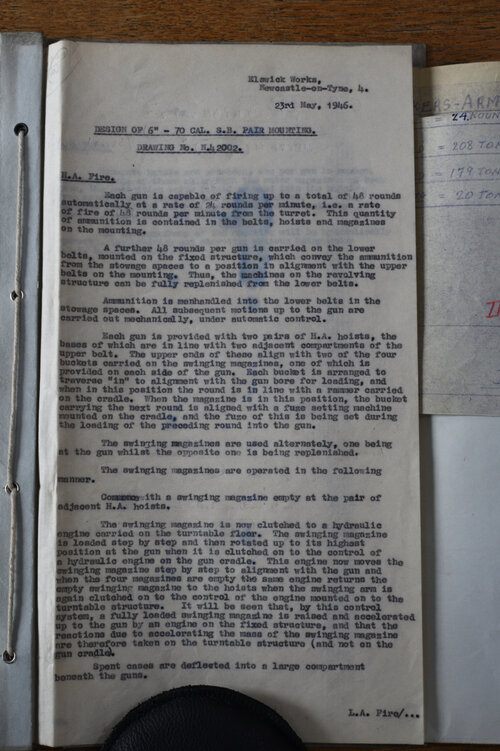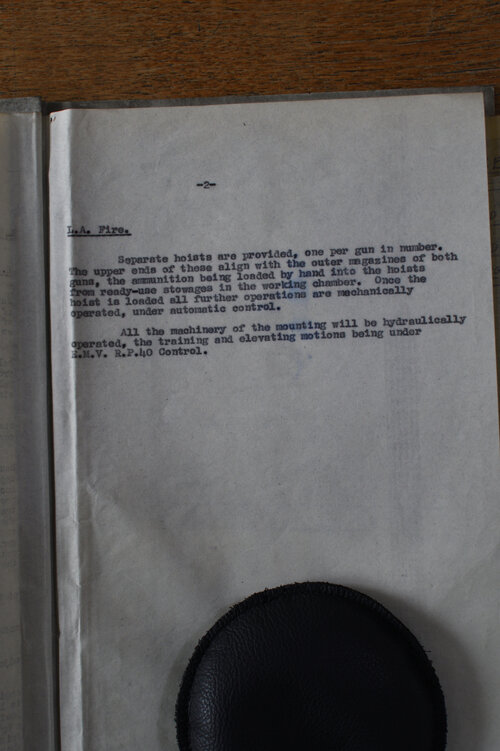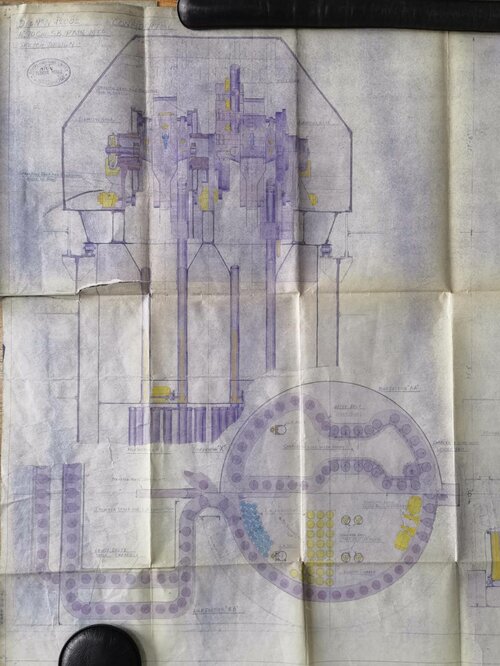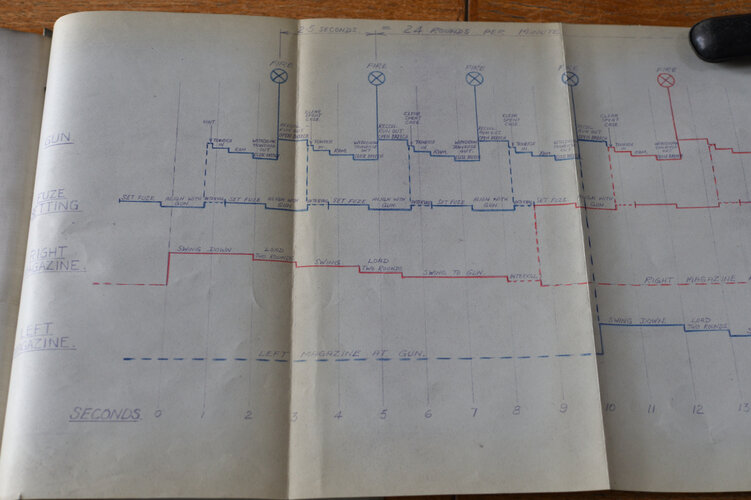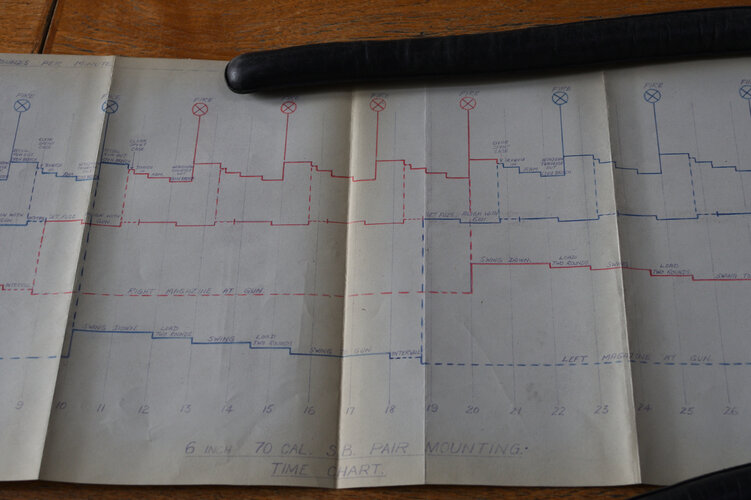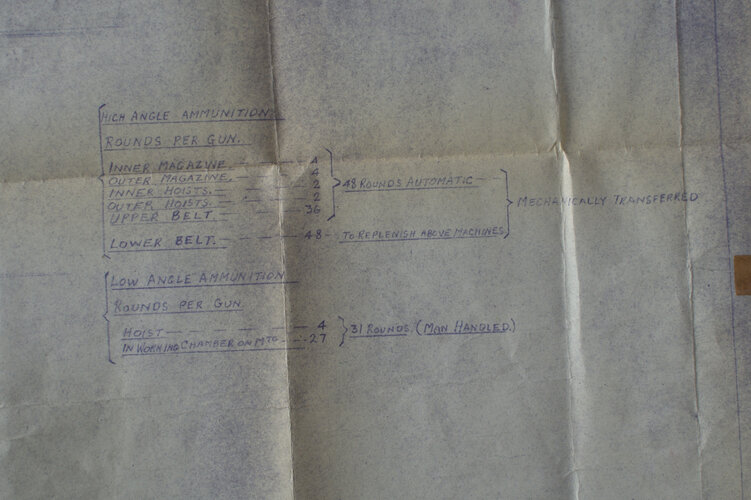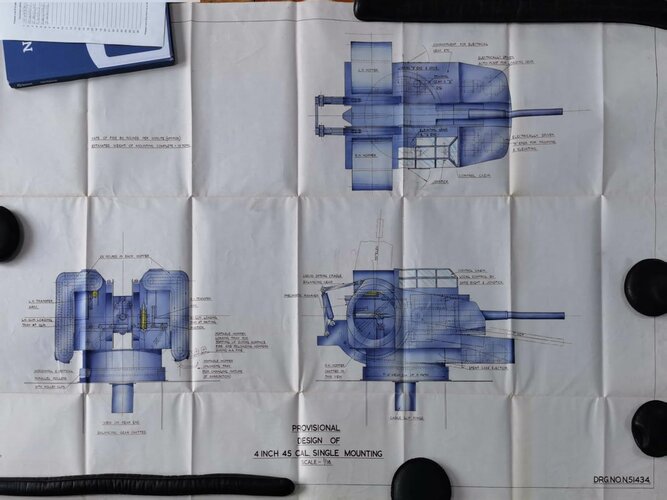When browsing Vickers Tyne & Wear Archive I noticed a really intersting and obscure design proposal. Not only by the strangely long barrel, sci-fi look turret (this is a 1946 drawing), but also the insane stats and unique operating mechanism. I also cannot find any information of this proposal online.
The file was archived in Tyne & Wear Archive with identification number DS.VA/6/25/13. It contains 2 page brief description, 1 mounting design plans and 1 firing timetable.
The turret is capable of firing at 24rpm per barrel, adding up to 48rpm per turret: faster than the 20rpm for 6"/50 Mark N5 gun. Other stats of the projectile are unknown. But considering later 5"/70 N1 with similar long barrel design, or the 6"/50 N5 firing superheavy shells, this gun might also fires a superheavy 6" shell at very high muzzle velocity. With 1inch thick shield the empty revolving weight was 179 ton while with 2 inch thick shield weight was 208ton -- A really low weight considering the rotating structure of real built 6" QF Mark 26 mount is 171ton.
This gun lacks water cooling systems. Considering such high rate of fire the intense heat may soon lead to a forced cooldown.
The gun seems to be fed from 2 swinging magazines, one is being reloaded from the bottom magazine while another is loading the gun at the gun position. The loading mechanism seems closer to those used on later fast firing N1 projects.I am, however, really having trouble understanding the working mechanisms, although a long documentary demonstration was provided. In my view one 4-round swinging magazine can only reload the gun on the either side, given the timechart, my assumption makes the twin turret only able to fire one of the gun simultaneously.
As far as I know, no projects were planned to use such mounting.
In addition, I tried to figure out what "S.B" abbreviation means. This is highly unlikely to be "smoothbore".


In order to better discuss the design background and working mechanisms I will just directly put the origial description and two drawings here. All photos are from the Tyne & Wear Archives. Due to copyright concerns at the moment I won't upload the high resolusion scan. I will delete the post if a violation to the copyright was confirmed.
The file was archived in Tyne & Wear Archive with identification number DS.VA/6/25/13. It contains 2 page brief description, 1 mounting design plans and 1 firing timetable.
The turret is capable of firing at 24rpm per barrel, adding up to 48rpm per turret: faster than the 20rpm for 6"/50 Mark N5 gun. Other stats of the projectile are unknown. But considering later 5"/70 N1 with similar long barrel design, or the 6"/50 N5 firing superheavy shells, this gun might also fires a superheavy 6" shell at very high muzzle velocity. With 1inch thick shield the empty revolving weight was 179 ton while with 2 inch thick shield weight was 208ton -- A really low weight considering the rotating structure of real built 6" QF Mark 26 mount is 171ton.
This gun lacks water cooling systems. Considering such high rate of fire the intense heat may soon lead to a forced cooldown.
The gun seems to be fed from 2 swinging magazines, one is being reloaded from the bottom magazine while another is loading the gun at the gun position. The loading mechanism seems closer to those used on later fast firing N1 projects.I am, however, really having trouble understanding the working mechanisms, although a long documentary demonstration was provided. In my view one 4-round swinging magazine can only reload the gun on the either side, given the timechart, my assumption makes the twin turret only able to fire one of the gun simultaneously.
As far as I know, no projects were planned to use such mounting.
In addition, I tried to figure out what "S.B" abbreviation means. This is highly unlikely to be "smoothbore".
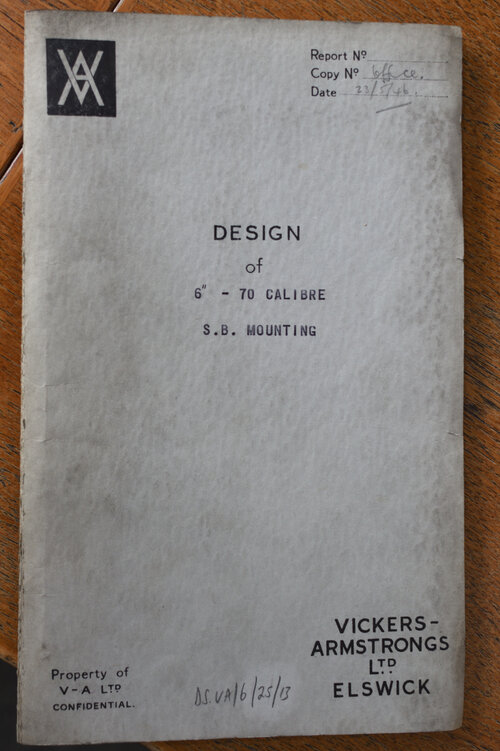
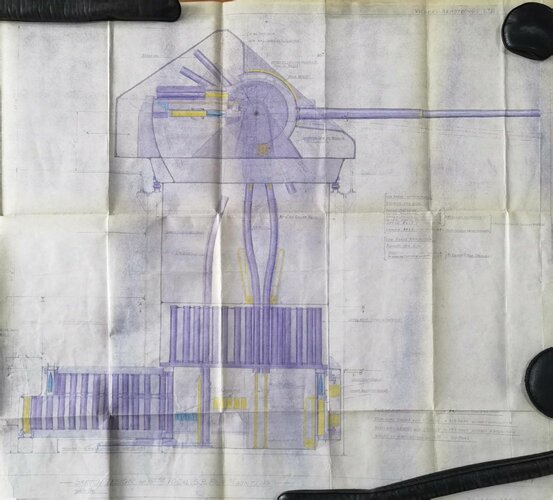
In order to better discuss the design background and working mechanisms I will just directly put the origial description and two drawings here. All photos are from the Tyne & Wear Archives. Due to copyright concerns at the moment I won't upload the high resolusion scan. I will delete the post if a violation to the copyright was confirmed.
Attachments
Last edited:

